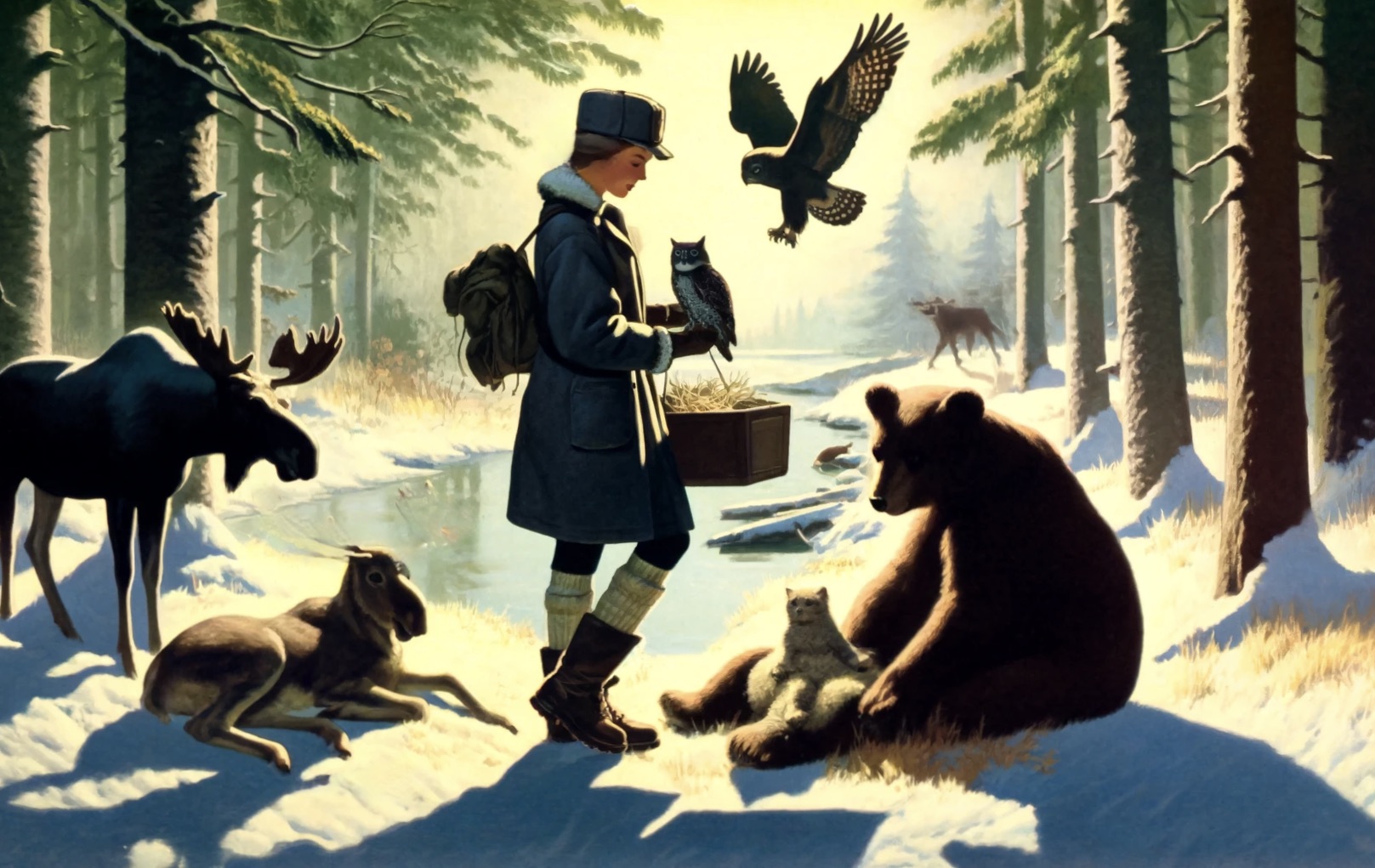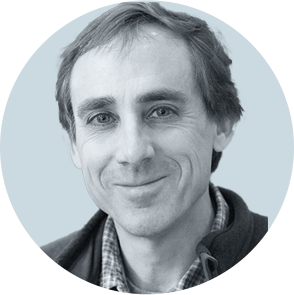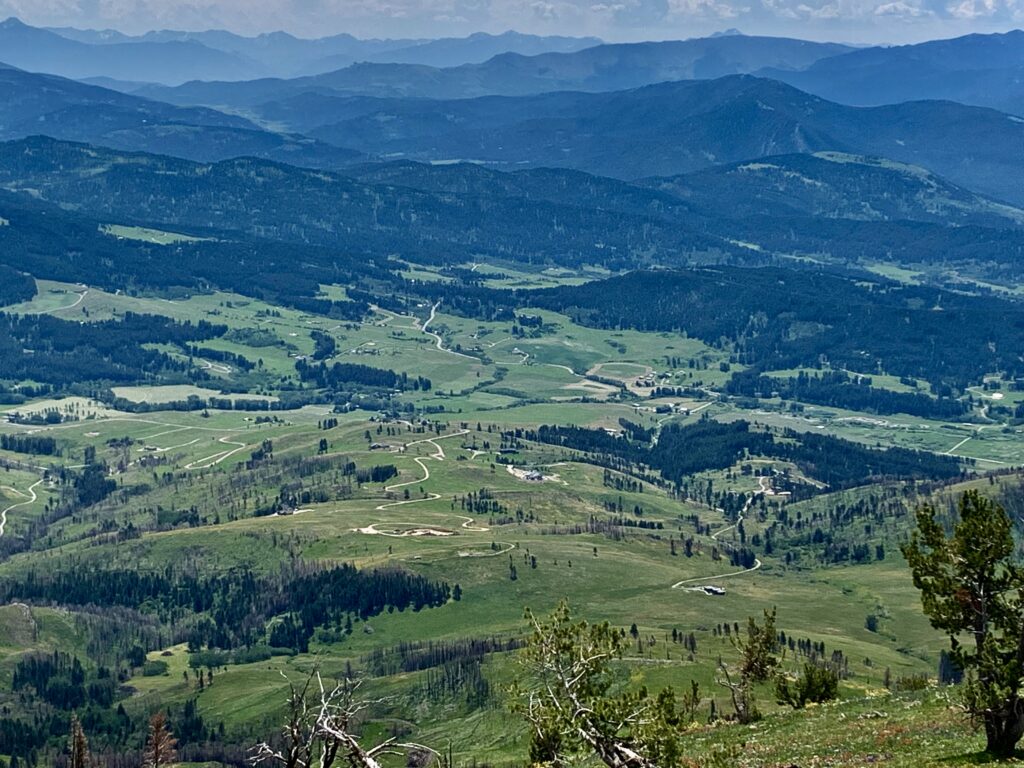by Todd Wilkinson
“One of the penalties of an ecological education is that one lives alone in a world of wounds.” So wrote Aldo Leopold in A Sand County Almanac, a 1949 classic published posthumously months after the American ecologist died in a wildfire on his property in Wisconsin.
In stories like this, to set the context, it may be useful to also remember an observation made by former Yellowstone science chief David Hallac. Assessing the myriad forces shaping the future of wildlife, he said the Greater Yellowstone Ecosystem isn’t suffering from a small handful of major identifiable threats, but rather it is being besieged, especially its private lands, by a scenario involving death by 10,000 scratches.
Those nicks, cuts, abrasions, and scars are impossible to ignore—though admittedly, it’s far easier to look the other way when we see troubling changes in the panorama we call home. And yet, when a person bothers paying attention, and tries to begin connecting dots to understand why it’s happening, there’s a transformation of awareness that occurs.
Wildlife rehabilitation, helping animals recover from unnatural injury, represents the epitome of what Leopold meant in his reference to a world of wounds. It’s a less conspicuous area of wildlife conservation, often underappreciated, that is positioned literally on the front lines of co-existence between humanity and wild nature. In many locales, hints of the toll are evident in highway roadkills but they take many different forms.
Lindsay Jones, who has worked in animal triage, understands the connection between environmental and human degradation better than most. She thinks about wellness, not only as a biologist who has refused to let individual injured animals become statistics in the loss column, but she is pursuing it as a personal meditation. As sprawl fragments landscapes, it can bring trauma to both wildlife and human communities, she says.
° ° ° °
Greater Yellowstone is a region of discovery for many young people coming of age in their late teens and 20s. It’s not uncommon for many to arrive and never want to leave. Struggling to eke out a living, they pursue forms of funhogery. Mostly, they come to play and relax, sometimes treating Greater Yellowstone as a stopover on their way to somewhere else.
The now 39-year-old Jones came to Jackson Hole fresh out of college and got into wildlife rehab after a few years working as a grunt field researcher. One of her projects involved tracking rare and imperiled wolverines in the Tetons. Eventually, she co-founded the Teton Wildlife Rehabilitation Center with conservation biologist Renee Seidler, who today is executive director of the Jackson Hole Wildlife Foundation.
Living in Greater Yellowstone, Jones says, comes with a kind of personal responsibility not readily apparent to newcomers who claim they are drawn to a region rich with wildlife but aren’t aware of what it requires in terms of their own lifestyles.
Urban transplants often fail to understand how this region is different from almost every other place in the Lower 48. They lack awareness about the negative impacts of growth and how it is resulting in a lot of wildlife casualties, according to a study published in Biological Conservation. Lead author Tara Miller pored over 600,000 intake reports at wildlife rehab centers across the country. “The data revealed that 40 percent of animals were sent to rehab centers because of injuries classified under the ‘human disturbances’ category,” Tara Miller said in an interview with Science Daily. “Forty percent of the animals showing up to wildlife rehab centers, largely because of human activity that has negatively impacted them. We need to ask how we can change our policies and behaviors to impact animals less.”
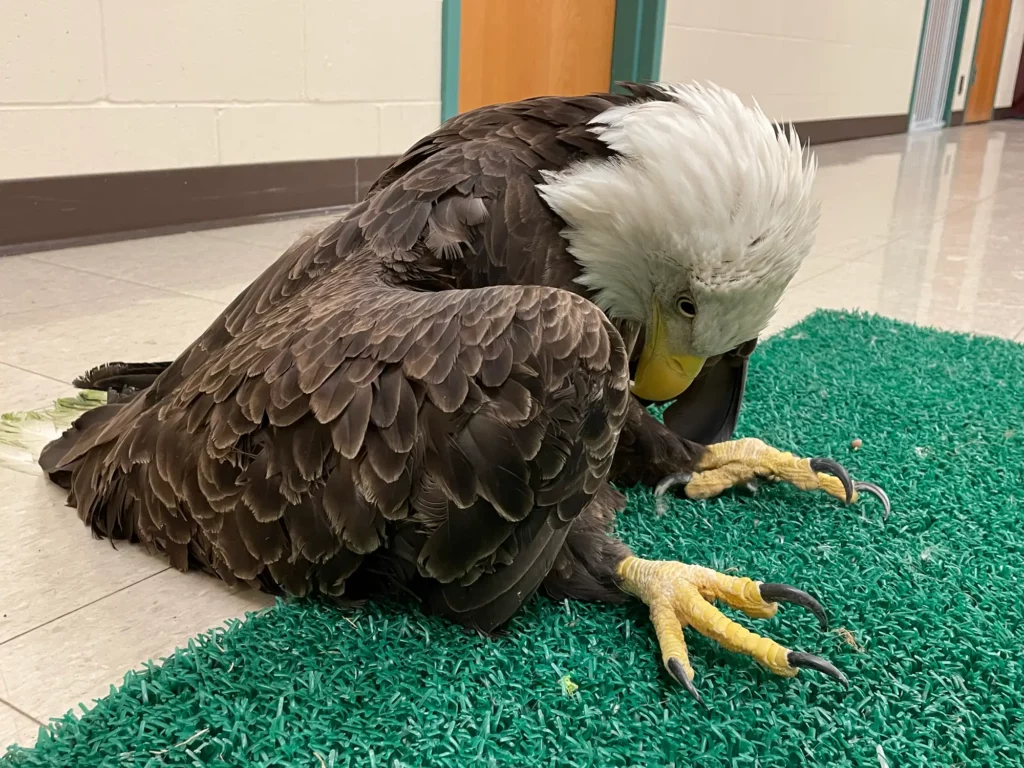
In every mountain valley, birds die every day flying into giant translucent picture windows in trophy homes built to give human inhabitants million dollar views of local peaks; mammals, large and small, are struck in collisions with vehicles caused by motorists driving distracted or too fast; wildlife gets entangled in barbed wire fences or is wounded by free-ranging domestic dogs and cats; animals are poisoned after eating other animals killed with led ammo, rodenticides or lethal baits put out to kill predators. They (and this includes our domestic animal friends) get caught in traps and snares. Even seemingly harmless bird feeders can spread diseases like Asian bird flu. They, and poorly secured trash cans, can lure in bears and other critters, causing them to be treated as “problem” or “nuisance” animals and then (lethally) removed.
All of the above are symptoms of a larger more insidious problem. The wildlife of Greater Yellowstone are being forced to navigate finite habitat being steadily whittled away in various forms of permanent and temporary invasions by us. This isn’t something that can be magically fixed with wildlife overpasses and underpasses; it requires each of us making adjustments in how we interact with nature.
Prior to doing her wildlife rehab work, Jones gained insight into an attitude prevalent among funhog outdoor recreationists in greater Jackson Hole who see wildlife and concerns raised about protecting habitat as representing a threat to them having fun in fulfilling their desire to do whatever they want. Panic from some locals likely stemmed from the well-known closure of Mount Hunt in the backcountry of Grand Teton National Park to safeguard bighorn sheep. It flared again with a project Jones worked on tracking rare and elusive wolverines in the Northern Rockies.
In that particular field effort overseen by Round River Conservation and project leader Kim Heinemeyer with the help of other prominent researchers, Jones assisted in making maps. One of the areas they focused on was the overlap in the Tetons between wolverine movement and places in the backcountry coming under increasing pressure from recreationists, be they skiers, snowboarders and snowmobilers.
While passing out GPS units to backcountry recreationists and subsequently after the fact, there was backlash from self-described “adventure athletes” and well-known locals. “A fair amount of them did not want us documenting the impact of their presence, and expressed concern that we would ‘shut down their ability to use the backcountry,’” Jones says. “Some of them were the same people who displayed a public persona in favor of wildlife conservation, but their real attitude was, ‘Go ahead and save the animals, just not in my wild back yard.’ It’s not like we were trying to close down recreation in the overall Greater Yellowstone Ecosystem, but if wildlife conservation requires that we limit our access, there’s often resistance or opposition from recreationists. It’s today an overarching social vibe that’s present in many mountain towns, unfortunately.”
“Some of them were the same people who displayed a public persona in favor of wildlife conservation, but their real attitude was, ‘Go ahead and save the animals, just not in my wild back yard.’ It’s not like we were trying to close down recreation in the overall Greater Yellowstone Ecosystem, but if wildlife conservation requires that we limit our access, there’s often resistance or opposition from recreationists. It’s today an overarching social vibe that’s present in many mountain towns, unfortunately.”
A similar attitude exists among residents moving into new private land subdivisions in the exurbs, the developers who are created them and the real estate agents competing to make sales. They don’t want to be bothered having to think about wildlife that is being usurped. When wildlife gets displaced, animals often come into conflict with humans and that conflict results in injury or death to individual animals, Jones says. That’s the reason why species fade away in the exurbs.
Several different research outfits are doing important work in gauging the impacts of sprawl and even the insidious effects of things like lead poisoning in birds. There’s the Craighead Institute led by Lance and April Craighead in Bozeman. Other members of that well-known family of scientific researchers also have a presence in Jackson Hole. A few years ago, Bryan Bedrosian, Derek Craighead and Ross Crandall, affiliated with Craighead Beringia South in Jackson Hole published an analysis in PLoS One. It exampled lead poisoning in eagles around Jackson Hole following the big game hunting season. A high percentage had elevated lead levels. They cited research showing that, in one study, 86 percent of migrant bald eagles in Montana had elevated lead levels. In many locations across the country, injured birds of prey account for a large percentage of animals brought to rehab centers.
After several years of constant work, research and networking, Jones and Seidler finally received their 501 (c)(3) status in August 2015 to open the Teton Wildlife Rehabilitation Center. It came in response to an obvious need to help animals suffering from human-related activities. They hoped rehab might allow some of the injured animals to recover and be returned back into the wild, though many still had to be euthanized. The multi-tasking was hard and agonizing. Lindsay departed in 2020 and Seidler left soon after that to take the leadership position at Jackson Hole Wildlife Foundation, which works on conflict prevention, wildlife mapping, co-existence and is trying to keep wildlife connectivity pathways viable. Its program Bear-Wise Jackson Hole launched in partnership with Grand Teton National Park, Wyoming Game and Fish and the Bridger-Teton National Forest, to promote more conscientious living in bear country. Meanwhile, Wyoming Wildlife Advocates’ Jackson Hole Bear Solutions program hs provided well over a thousand bear-resistant trash cans throughout the community at or below cost, with many residents receiving their can for free or nominal cost, according to W. Kent Nelson, founder of that organization.https://www.jhbearsolutions.org/
While wearing too many hats and experiencing burnout from being on call 24/7, Jones says she was simultaneously experiencing some unknown and ongoing health issues. She had to stop to look after herself. It caused her to reflect on the needs of both humans and wildlife to have access to good nutrition and less stressful environments. Jones today is devoting the next chapter of her life to advising people on how to adopt better nutrition and integrated health strategies to overcome illness.
Although she stepped away from the Teton Wildlife Rehab Center, she is still involved in several wildlife conservation efforts, including being an adjunct board member of the International Wildlife Rehabilitation Council.
Not long ago, that organization wrote a short profile about Jones and asked her which career path she might choose were she to start all over again. “In my next lifetime, I hope to be a forensic pathologist,” she said. “I have early memories from high school, perhaps even earlier, of being fascinated with the cycle of life. I also have a predisposition for detective work and the minutiae of details, and I have always been intrigued with the events surrounding life and death.”
Jones recently started a new business based in Victor, Idaho called Wydaho Integrative Wellness that counsels clients on how to make positive changes in their lives and approach personal health with an eye on nutrition, exercise and mindfulness. We think readers will find Jones’ journey and insights to be both fascinating and inspiring. Here’s an abbreviated version of our conversation below.

YELLOWSTONIAN: What were the catalysts that got you interested in the somewhat obscure realm of wildlife rehab and why does it matter? Could you share a few anecdotes of encounters that left a deep impression on you.
LINDSAY JONES: I’ve been a huge animal lover my whole life. I received my BS in Animal Biology and drove across the country once I graduated college to live with my aunt in Wilson, [Wyoming] and get some field work under my belt. I intended to apply for grad school after being in Jackson Hole for a summer but then my plans changed.
YELLOWSTONIAN: Tell us about that.
LINDSAY JONES: Once I started to get my foot in the door and network with various biologists and agencies, I realized that I was exactly where I needed to be for wildlife work. I had volunteered briefly at a wildlife rehabilitation center in Tennessee (Walden’s Puddle) right before I moved out here, but I learned a lot in a short amount of time. Once in Jackson, I quickly started noticing injured animals and a lot of human wildlife interactions, and I was shocked to discover that we had no resources to help them (other than our local Teton Raptor Center for birds of prey). It felt like the only option was to let them slowly suffer to death or euthanize, so the impression that I had as a novice wildlife biologist was that nobody really cared.
YELLOWSTONIAN: What insight can you offer about the toll?
LINDSAY JONES: It’s far bigger than most people realize. Rehab centers are inundated and employees with state wildlife agencies are constantly bombarded with phone calls about injured animals or from residents who don’t know how to live near wild places. They move to the edge of a national forest, see an animal, get scared, complain about it being there and then want it removed.
YELLOWSTONIAN: Earning standing in a new community can be tricky. Greater Yellowstone has several towns where part-timers like to come and exploit the natural amenities but they’re stingy about making contributions to wildlife conservation efforts. The same can be said of permanent residents and even longtime locals. There are a lot of people who stay on the sidelines.
LINDSAY JONES: My aunt has lived out here for 40-odd years. When I arrived, I felt there was an attitude in the valley that if you’re not local, with deep family roots, then you’ll have to earn your place here, and I had a strong drive to do so. I understand that old attitude and it still exists. To live in a community means helping to protect the great things that set it apart.
“My aunt has lived out here for 40-odd years. When I arrived, I felt there was an attitude in the valley that if you’re not local, with deep family roots, then you’ll have to earn your place here, and I had a strong drive to do so. I understand that old attitude and it still exists. To live in a community means helping to protect the great things that set it apart.”
YELLOWSTONIAN: You don’t strike us a person who merely complains as a whiny spectator. When a person starts paying attention to the phenomenon of wounded animals or dead ones along the road, it’s really hard to “unthink” what you’re noticing.
LINDSAY JONES: I started having dreams about starting a wildlife rehabilitation facility. At the time, I was working at a gear shop (Teton Mountaineering) when Renee Seidler, a local wildlife biologist who also had worked on field research came in. We started talking and became fast friends. One day I told her about my concerns with our injured wildlife and that I thought we needed a wildlife rehabilitation center that focused on more than birds here in Greater Yellowstone. She loved the idea and wanted to help, and this is how the Teton Wildlife Rehabilitation Center was born, in Driggs, Idaho. I remember that wildlife-vehicle collisions and subsequent orphaned animals left a deep impression on me, and was something that I really wanted to address.
YELLOWSTONIAN: So, you were involved on both sides of the Pass? We should probably explain here that Jackson Hole, Wyoming is on the east side of the Tetons and Teton Valley, Idaho is on the west side. There’s a Teton County, Wyoming and a Teton County, Idaho side by side. What were the logistical challenges of getting a rehab center going?
LINDSAY JONES: Yes, our efforts were focused on both sides of the Pass. By far the biggest challenge in getting the center up and running was navigating the permitting process, which involves getting approval at the federal, state, and local level. Every state and region is different, but in Idaho, the rules for permitting vary by region of the state, meaning that what is allowed in one region may not be allowed in another region. This created a big challenge when receiving calls about wildlife in another county, and potentially not being able to help them. The same applies to bringing animals over state lines, which is not allowed.

YELLOWSTONIAN: Indeed, wildlife transcend state lines. In practical terms, there’s no such thing as “Idaho” wolverine or a “Wyoming” wolverine. The animal doesn’t have to navigate border security or clear customs. Can you elaborate more on the difficulties.
LINDSAY JONES: For example, if we got a call about an injured animal in Wyoming, we were scrambling to figure out where we could rehabilitate it without bringing it back to Idaho. There were also certain species that we were not allowed to rehabilitate, but this also varied by region and state, adding to the complexities. The next biggest challenge was funding. We needed a lot of it to build the facility while also raising money for my salary as the only paid staff member.
YELLOWSTONIAN: That sounds like a crazy endeavor, having to do fundraising, admin and outreach work, on top of the very difficult task that is at the core of your mission—assisting a wide array of injured animals on both sides of the Pass. So that readers know, why is helped injured wildlife so complicated?
LINDSAY JONES: The reasons behind some of these rules are due to concerns about wildlife diseases or habituation. But largely, a lot of state agencies support conservation and rehab that is a consequence of trapping, hunting, and fishing, such as Idaho. But there are a lot of animals that get wounded, for example, as a consequence of trapping. It took a lot of convincing that wildlife rehabilitation fell within legitimate conservation goals. The good ol’ boy mentality is still very much alive, and sometimes I wonder if wildlife rehab was viewed as ineffective or too progressive.
YELLOWSTONIAN: Strange that helping injured animals, be they wild, livestock or pets, might be construed as somehow “political.” Although daunting, you and Renee still pressed on and were rewarded by confronting a lot of red tape, it seems.
LINDSAY JONES: Permits are hard to come by, and permitting officers are by no means required to dish them out if they don’t think that rehab is needed in their region. Renee and I spent a lot of time crafting our interactions and tact in order to create the best possible image for us to make this all happen. Fortunately, we had an impressive amount of wildlife experience, coupled with a lot of stubbornness, but I’m not so sure that any other pair of people would have had the same success.
YELLOWSTONIAN: We’ve hard discussions at various times about the many different causes of wildlife injuries and it’s a reminder that, apart from the simple challenge of simply existing for animals in nature, the growing human footprint on landscapes brings many different mortal perils. And they happen as a correlation to growing communities. What do people need to understand?
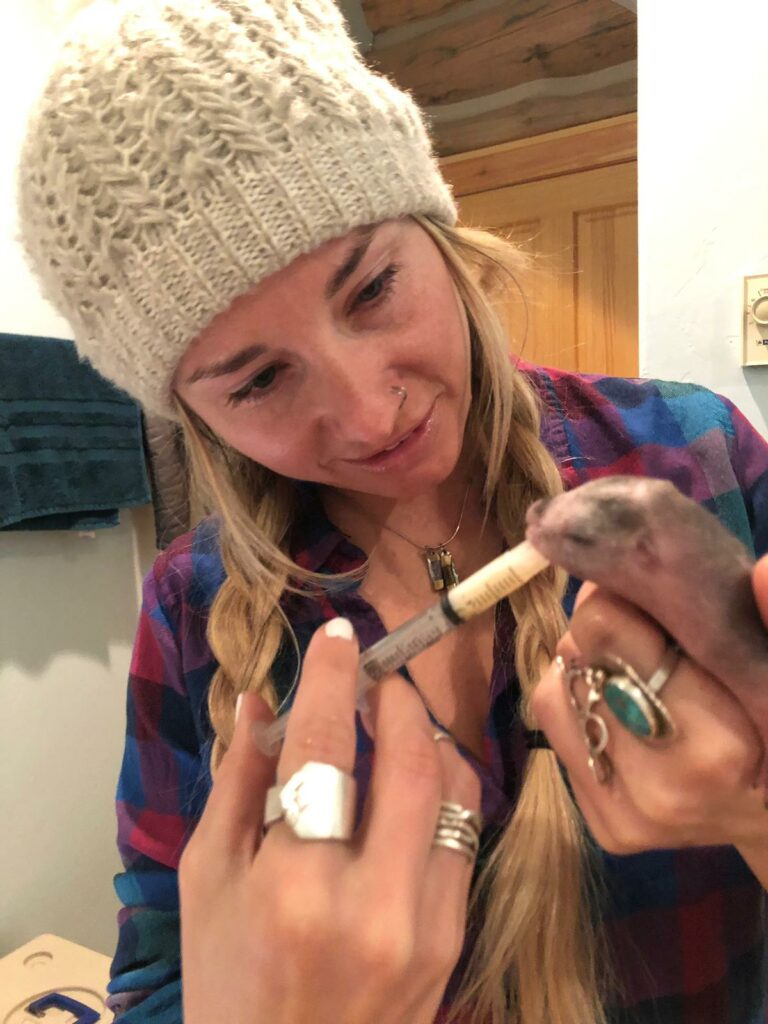
LINDSAY JONES: I think a lot of what I saw was the result of people being careless and or selfish, which could easily be a result of lack of knowledge. This is just a simple example. When people use glue traps for mice or bats, they may not realize what an awful death that entails. Or, for fishermen who discard their lures and lines on the side of the river, although they should know that littering is bad, they may not realize what a slow death waterfowl and other animals might experience, should they come into contact with them. Overall, as humans continue to populate and expand our footprint, it inevitably takes away habitat for our wildlife, subsequently resulting in more human-wildlife conflicts. Resources become more scarce, species populations decline, ecosystems become disrupted, and these all have broader consequences for the biodiversity of our planet.
YELLOWSTONIAN: How has your thinking about what’s at stake in the Greater Yellowstone Ecosystem, and the Rocky Mountain West, evolved?
LINDSAY JONES: There are so many nuances to what’s at stake. On more of a local and personal level, I think that as greed and income gaps increase, we stand to lose more community character as well as people who better understand what it means to live responsibly around wild areas. There seems to be an influx of people who may not have a vested interest in our landscapes, and on some level, it feels like the uphill battle to fight the good fight is becoming steeper. As mentioned above, I think that fragmentation itself has a cascading effect that not only threatens the nearly intact Greater Yellowstone Ecosystem, but ultimately the biodiversity of our planet itself.
YELLOWSTONIAN: You’re shifting your focus now into issues of wellness. What was the catalyst for the move, and how is it actually an extension of your thinking about the connection between human and ecological health, as it relates to preserving our natural sense of place?
LINDSAY JONES: I’ve struggled with a few debilitating and chronic conditions since an early age, and also grew up with my mother who suffered from several severe autoimmune diseases. Because of this, I did a lot of research and became really interested in nutrition and integrative health modalities from an early age, so moving in this direction made sense. There were a lot of challenges with my previous career, as well as challenges I faced in the non-profit sector. I needed to be in a place of more financial stability, and I also wanted to be in a position where I didn’t have to answer to a board and could take full responsibility for the direction of my career.
“We like to think of ourselves as these healthy, philanthropic environmentalists. We put so much effort into preventative measures to keep ourselves young and healthy, so why do we not put the same effort into preserving our natural sense of place?”
YELLOWSTONE: Please expand a bit on the parallels you see between your two careers.
LINDSAY JONES: What we put into our bodies is directly correlated with our short and long-term health, just as how we treat our wild spaces is directly correlated with the longevity of our planet. We like to think of ourselves as these healthy, philanthropic environmentalists. We put so much effort into preventative measures to keep ourselves young and healthy, so why do we not put the same effort into preserving our natural sense of place? Everything is connected on this planet, physically and energetically.
YELLOWSTONIAN: On both sides of Teton Pass, the lack of sufficient affordable housing is negatively impacting local communities, particularly working class folk who are being priced out by wealthier newcomers moving in. Grown children of longtime locals are unable to live in the towns where they were raised. You’ve been in the midst of social adversity that forces people to leave.
LINDSAY JONES: This is such an important issue with a lot of complexities. I think overall we’re just losing important characters of the valley that all have all contributed to protecting and serving this place. It’s difficult to play an active role in your community and/or have a vested interest if you only live here three months out of the year or have just moved here. There is an old saying, “Don’t let the Hole lose its soul,” and this still rings very true today.
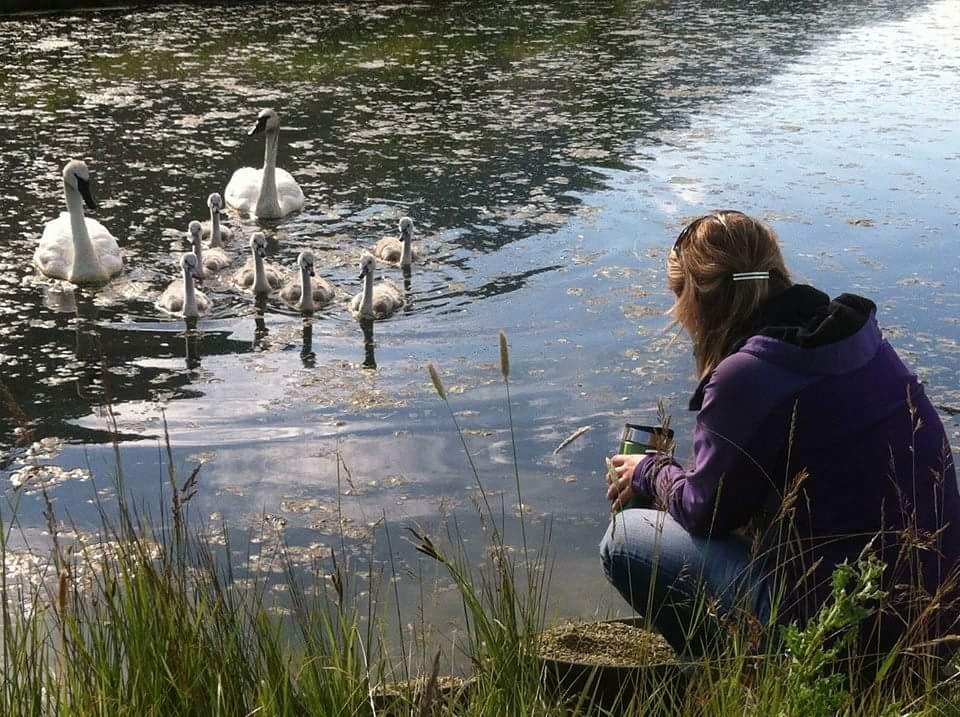
YELLOWSTONIAN: Along with the above is an obvious paradox. Some developers are asserting that the way to address the housing issue is to build a lot more homes and weaken regulations relating to planning and zoning. The problem with that is it fuels more sprawl which is leaving wildlife in need of secure habitat, which is finite, to be left homeless. As wildlife is displaced and open space vanishes, it erodes the very essence of what made these places attractive to begin with. What’s the answer?
LINDSAY JONES: That is the million dollar question, right? A similar paradox would be putting land into conservation easements, which protects wildlife, but also protects land that could otherwise be used for housing. There is something in wildlife biology called carrying capacity, and I often think of this as a good analogy to our current housing crisis. We have already witnessed some side effects of this, but I think eventually we will run out of resources and will be forced to make some serious changes to how we approve development etc. Our valleys can only support so much, and once we run out of space to build, locals get priced out, nobody is here to run our businesses, and human-wildlife conflicts increase, something will have to give. And I don’t want to give the impression that nobody is being proactive about this, because there are some amazing organizations out there pounding the pavement to protect our wildlife and our housing. Growth is a nuanced issue to combat, and money talks.
YELLOWSTONIAN: Many of us who came to Greater Yellowstone did so when we were in our 20s, invigorated by the beauty of the scenery, the opportunities to immerse ourselves in nature and then try to stay here. If you were standing in front of a crowd of Millennials and GenZers, how would you describe the change that’s happened in your own perspective— and how the best way to preserve a place is to refrain from only viewing it only within the context of what you can extract from it?
LINDSAY JONES: You ask the tough ones. I’ve always been a “pay it forward” kind of person; it’s nearly my tragic flaw. I think that there needs to be a real collective change of consciousness if we are to preserve our wild spaces as our ancestors did. We have to become more selfless, and again, something will have to give. I think we all need to make an effort to be more conscious of our daily actions, and my hope is that more people will start to understand and appreciate the value of preserving our wild spaces for future generations. If you want to break it down into a more tangible and biological level, just think about the synthetic hormones that we take, our greenhouse emissions, the amount of waste that we create daily that can’t break down in landfills, the BPAs that we ingest, etc. These things affect our epigenetics. They end up in our waterways, on land and in the atmosphere, which subsequently affects present and future generations of humans and wildlife alike.
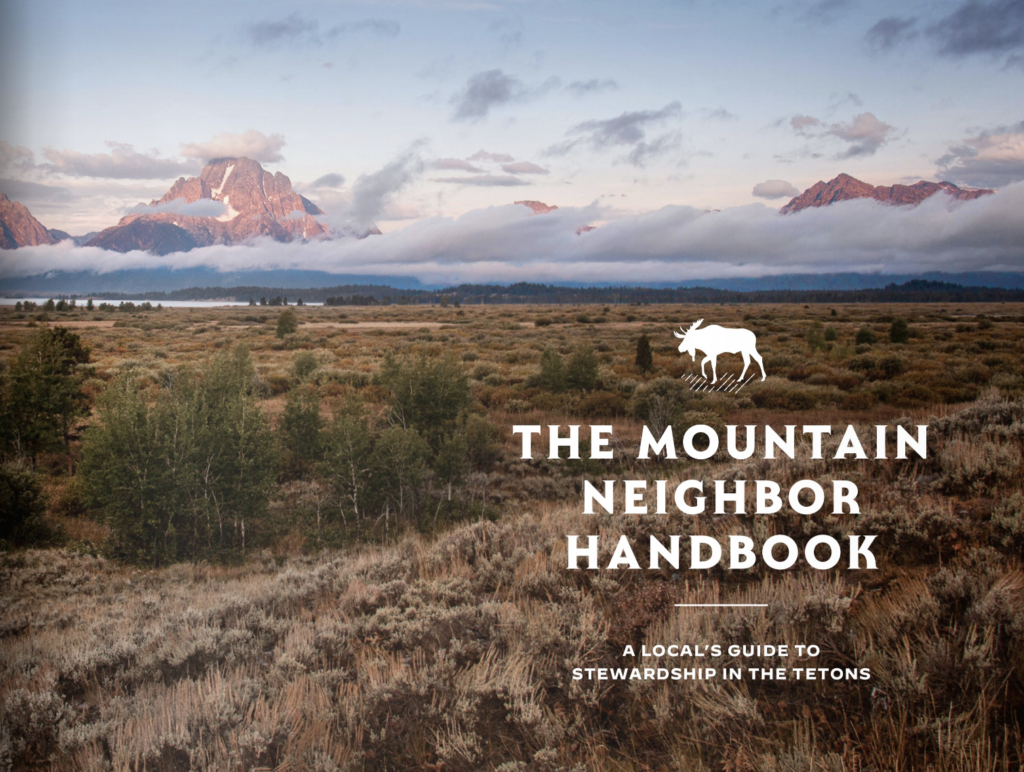
YELLOWSTONIAN: What can readers do themselves to help slow the toll of wildlife suffering from a rapidly expanding human footprint? Let’s note that organizations in the Jackson Hole community have created a fantastic resource, especially for newcomers, that spells out what it means to be a responsible, nature-loving citizen with the free guidebook, The Mountain Neighbor Handbook: A Local’s Guide to Stewardship in the Tetons. There ought to be one for every town in Greater Yellowstone. Anything, you’d like to add?
LINDSAY JONES: Well, for starters, I would suggest people download a copy of a free booklet, Wild Neighbors: The Humane Approach to Living with Wildlife, published by the Humane Society. If you’re building a home outside of town, understand the consequences of what you’re doing. Consult with a professional wildlife biologist before you break ground so you can site your structures in places that will do the least amount of harm. Slow down when you drive. Keep your dogs on leash and don’t let your cats kill wild birds. Don’t use toxic rodenticides. Buy wildlife-proof trash containers. Hang your bird feeders high and keep them clean or, if they are an attractant to bears, don’t have them. Replace wildlife unfriendly fencing. Open your eyes and celebrate the fact that you get to live in an ecosystem like this but strive to be a good neighbor to wildlife and all beings. It will help your own mental health. Support your local wildlife rehab center. They’re doing important essential work. Be part of the solution, not the problem.
YELLOWSTONIAN: What’s next for Lindsay Jones? How are you making meaning?
LINDSAY JONES: I’m literally just trying to survive so that I can continue to work towards protecting the animals, people, and community that I hold so dear to me. I’ve been spending a lot of time over the last two years since my mom passed just tapping into the universe and trying to figure out my purpose. It has been a very meaningful and eye opening journey for me. Other than that, just paying it forward, taking care of myself, and developing my new nutrition business. I hope—and plan—to continue being a voice and force for our wildlife and wild spaces indefinitely.

